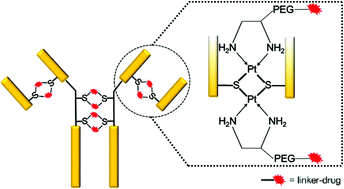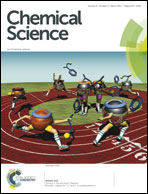Development of a facile antibody–drug conjugate platform for increased stability and homogeneity†
Abstract
Despite the advances in the design of antibody–drug conjugates (ADCs), the search is still ongoing for novel approaches that lead to increased stability and homogeneity of the ADCs. We report, for the first time, an ADC platform technology using a platinum(II)-based linker that can re-bridge the inter-chain cysteines in the antibody, post-reduction. The strong platinum–sulfur interaction improves the stability of the ADC when compared with a standard maleimide-linked ADC thereby reducing the linker–drug exchange with albumin significantly. Moreover, due to the precise conserved locations of cysteines, both homogeneity and site-specificity are simultaneously achieved. Additionally, we demonstrate that our ADCs exhibit increased anticancer efficacy in vitro and in vivo. The Pt-based ADCs can emerge as a simple and exciting proposition to address the limitations of the current ADC linker technologies.



 Please wait while we load your content...
Please wait while we load your content...